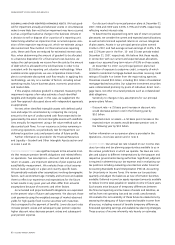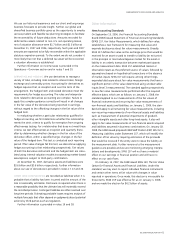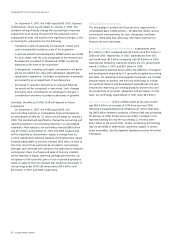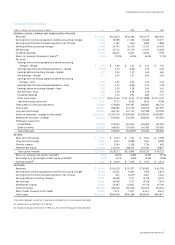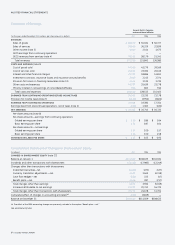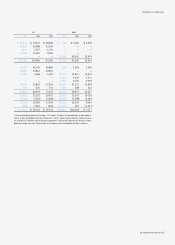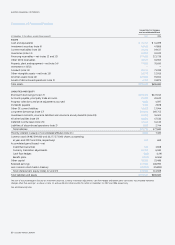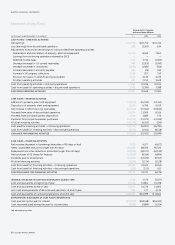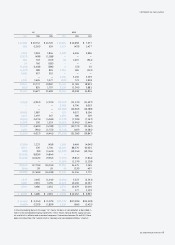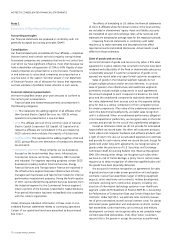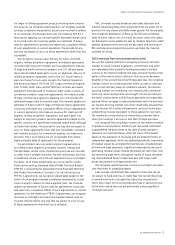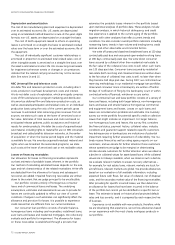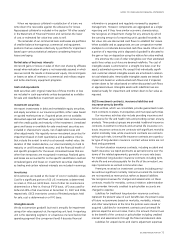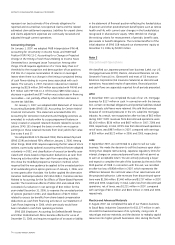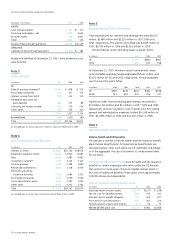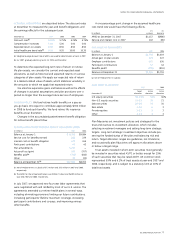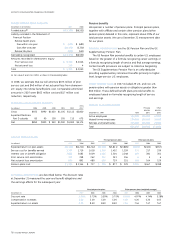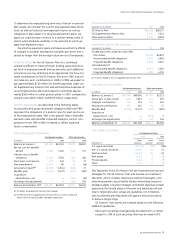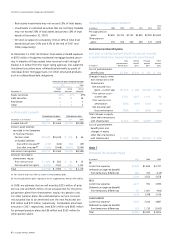GE 2007 Annual Report Download - page 72
Download and view the complete annual report
Please find page 72 of the 2007 GE annual report below. You can navigate through the pages in the report by either clicking on the pages listed below, or by using the keyword search tool below to find specific information within the annual report.
70 ge 2007 annual report
Note 1
Summary of Significant Accounting Policies
Accounting principles
Our fi nancial statements are prepared in conformity with U.S.
generally accepted accounting principles (GAAP).
Consolidation
Our fi nancial statements consolidate all of our affi liates — companies
that we control and in which we hold a majority voting interest.
Associated companies are companies that we do not control but
over which we have signifi cant infl uence, most often because we
hold a shareholder voting position of 20% to 50%. Results of asso-
ciated companies are presented on a one-line basis. Investments
in and advances to associated companies are presented on a
one-line basis in the caption “All other assets” in our Statement
of Financial Position, net of allowance for losses that represents
our best estimate of probable losses inherent in such assets.
Financial statement presentation
We have reclassifi ed certain prior-year amounts to conform to
the current year’s presentation.
Financial data and related measurements are presented in
the following categories:
• GE This represents the adding together of all affi liates other
than General Electric Capital Services, Inc. (GECS), whose
operations are presented on a one-line basis.
• GECS This affi liate owns all of the common stock of General
Electric Capital Corporation (GE Capital). GE Capital and its
respective affi liates are consolidated in the accompanying
GECS columns and constitute the majority of its business.
• CONSOLIDATED This represents the adding together of GE and
GECS, giving effect to the elimination of transactions between
GE and GECS.
• OPERATING SEGMENTS These comprise our six businesses,
focused on the broad markets they serve: Infrastructure,
Commercial Finance, GE Money, Healthcare, NBC Universal
and Industrial. For segment reporting purposes, certain GECS
businesses including Aviation Financial Services, Energy
Financial Services and Transportation Finance are reported in
the Infrastructure segment because Infrastructure actively
manages such businesses and reports their results for internal
performance measurement purposes. During the fourth quarter
of 2007, we transferred the Equipment Services business from
the Industrial segment to the Commercial Finance segment,
where a portion of the business is reported in Capital Solutions.
Prior period information has been reclassifi ed to be consistent
with the current organization.
Unless otherwise indicated, information in these notes to con-
solidated fi nancial statements relates to continuing operations.
Certain of our operations have been presented as discontinued.
See note 2.
The effects of translating to U.S. dollars the fi nancial statements
of non-U.S. affi liates whose functional currency is the local currency
are included in shareowners’ equity. Asset and liability accounts
are translated at year-end exchange rates, while revenues and
expenses are translated at average rates for the respective periods.
Preparing fi nancial statements in conformity with GAAP
requires us to make estimates and assumptions that affect
reported amounts and related disclosures. Actual results could
differ from those estimates.
Sales of goods and services
We record all sales of goods and services only when a fi rm sales
agreement is in place, delivery has occurred or services have been
rendered and collectibility of the fi xed or determinable sales price
is reasonably assured. If customer acceptance of goods is not
assured, we record sales only upon formal customer acceptance.
Sales of goods in the Industrial segment typically do not
include multiple product and/or services elements. In contrast,
sales of goods in the Infrastructure and Healthcare segments
sometimes include multiple components. In such agreements,
the amount assigned to each component is based on the total
price and the undelivered component’s objectively determined
fair value, determined from sources such as the separate selling
price for that or a similar component or from competitor prices
for similar components. If fair value of the undelivered component
cannot be determined satisfactorily, we defer sales recognition
until it is delivered. When an undelivered performance obligation
is inconsequential or perfunctory, we recognize sales on the total
contract and provide for the cost of the unperformed obligation.
Except as otherwise noted, we do not provide for anticipated
losses before we record sales. We often sell consumer products,
home videos and computer hardware and software products with
a right of return. We use our accumulated experience to estimate
and provide for such returns when we record the sale. Except for
goods sold under long-term agreements, we recognize sales of
goods under the provisions of U.S. Securities and Exchange
Commission Staff Accounting Bulletin 104, Revenue Recognition
(SAB 104). Among other things, we recognize such sales when
we have no risk of transit damage, a policy that in certain cases
requires us to delay recognition of otherwise qualifi ed sales until
the goods have been physically delivered.
We account for revenue recognition on agreements for sales
of goods and services under power generation unit and uprate
contracts; nuclear fuel assemblies; larger oil drilling equipment
projects; turbo-machinery unit contracts; military development
contracts; and long-term construction projects, including con-
struction of information technology systems in our Healthcare
segment, under AICPA Statement of Position (SOP) 81-1, Accounting
for Performance of Construction-Type and Certain Production-Type
Contracts. Under SOP 81-1, we estimate total contract revenue
net of price concessions as well as total contract costs. For goods
sold under power generation unit and uprate contracts, nuclear
fuel assemblies, turbo-machinery unit contracts and military
development contracts, we recognize sales as we complete major
contract-specifi ed deliverables, most often when customers
receive title to the goods or accept the services as performed.


